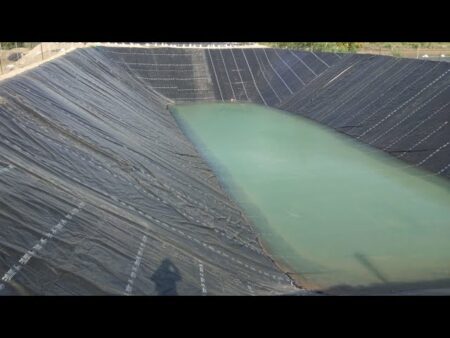Auto Replenishment: A Brief Overview. Maintaining ideal inventory levels for businesses requires careful attention to inventory replenishment. But old-fashioned physical methods take a long time, are prone to mistakes, and don’t work well in today’s fast-paced business world. As a way to deal with these problems, replenishment systems have been developed. These systems optimize and accelerate the replenishment process by utilizing technology and automation.
To make replenishment plans and orders, replenishment systems use combined demand forecasts, inventory management, and automatic order creation. These systems automatically create buy orders by studying past sales data, wait times, and other important factors to determine the best reorder levels. Businesses can reduce stockouts and increase customer happiness by using the automation of the replenishment process to make sure they always have the right amount of inventory.
Notably, replenishment systems are advantageous to retailers of all kinds. Retailers prevent stockouts and lost sales due to inventory shortages by using automation. This makes customers happier and more loyal, which leads to more sales and more money.
How Replenishment Systems Work
Resupply systems use advanced technology and formulas to automate the process. For a brief look at how replenishment systems work, here are the steps:
Step 1: Data Collection
Resupply systems gather and analyze various types of data, such as past sales, wait times, and inventory levels. This information shows trends of demand and helps figure out how much inventory will be needed in the future.
There are a number of tools that retailers can use to improve management and track their inventory. A handheld barcode scanner that can quickly and correctly read barcodes on products is a useful tool that can keep you up to date on inventory levels in real time. Inventory management software is another helpful tool. It gives retailers a central place to keep track of their inventory levels, sales, and replenishment requirements.
Step 2: Demand Forecasting
Retailers can guess what customers will buy in the future and get ready for changing market conditions by looking at data that is already available. Supply chain management, financial planning, and customer success management are all easier for businesses when they can accurately predict demand. In addition to allowing for necessary changes during unforeseen events, it ensures that retailers have enough stock to meet customer needs.
Using the newest machine learning technology to predict demand can make forecasts much more accurate and help businesses make decisions about inventory management based on data. Businesses can understand demand trends, effectively control inventory levels, and optimize their resources and processes with the help of the most cutting-edge software, like Leafio.
Step 3: Replenishment Trigger
When inventory levels drop below a certain level, the replenishment system sends out a replenishment signal. This event initiates the process of creating purchase orders or other replenishment steps.
Step 4: Order Generation
Upon receiving the replenishment signal, the system promptly initiates purchase orders for the necessary products or materials. The system has the ability to establish connections with suppliers’ systems, enabling the online submission of these orders.
Step 5: Order Fulfillment
Suppliers fill the orders and bring the products or materials to the business once the purchase orders have been created. When an order comes in, the replenishment system keeps track of its state and changes the inventory levels to match.
Step 6: Inventory Reconciliation
When new products or materials are received, the replenishment system updates the stock levels to make sure the inventory is balanced. To make future replenishment choices, this ensures that the system has correct and up-to-date data.
Types of Replenishment Systems
There are different types of replenishment systems, and each one meets the wants of a different business. The following are popular types of replenishment systems:
- Continuous Replenishment: Continuous replenishment systems aim to maintain a constant inventory flow in response to demand. These systems utilize advanced formulas to monitor inventory levels and initiate the replenishment process immediately when specific levels are reached.
- Periodic Replenishment: Restocking inventory on a regular basis, like once a week or once a month, is what periodic replenishment systems are all about. Using past sales data and predetermined reorder points, these systems create replenishment orders.
- Vendor-Managed Inventory (VMI): systems entail suppliers controlling the inventory levels of their customers. Suppliers monitor inventory levels, generate replenishment orders, and dispatch additional materials or products as required. Collaboration between suppliers and customers is improved by VMI systems in the supply chain.
- Just-in-Time (JIT): When you send products or materials exactly when they are needed, just-in-time (JIT) replenishment systems try to keep inventory-keeping costs as low as possible. For these systems to work, suppliers and customers must work together closely to make sure deliveries happen on time and there aren’t any stock-outs.
Choosing the Right Replenishment System
When selecting a replenishment system for your business, consider several factors.
To determine your replenishment system’s needs, consider your business’s goals. Factors like inventory turnover, wait times, fluctuating demand, and customer standards should be taken into account. Pick a replenishment system that is flexible and scalable so it can handle changes in demand, new products, and the way the market is doing.
Make sure that it works well with the systems you already have, like supplier systems, inventory management tools, and ERP systems. Such integration makes it easier to share info and accelerate the process of replenishment. Think about how much collaboration and communication with your suppliers are necessary. Close collaboration and trust between suppliers and customers are necessary for some systems, like VMI or JIT. Choose a system that fits with the goals of your collaboration by evaluating your ties with suppliers.
Conclusion
It is possible to improve inventory management and make the replenishment process more efficient with replenishment systems. Businesses can reduce stockouts, lower moving costs, and boost customer happiness by automating the replenishment process to make sure they have the right amount of stock at the right time. Businesses can increase productivity, cut costs, and boost revenue with the right replenishment system.
You are investing in the future of your business when you buy replenishment systems. Embrace automation and optimize your inventory management with replenishment systems to maintain a competitive edge.



